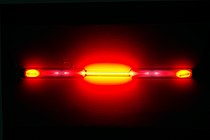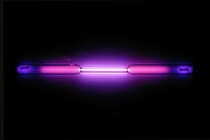Group 18
| Noble gases | |||||||||||
|---|---|---|---|---|---|---|---|---|---|---|---|
|
|
|||||||||||
|
|||||||||||
| ↓ Period | |||||||||||
| 1 |
Helium (He) 2 |
||||||||||
| 2 |
Neon (Ne) 10 |
||||||||||
| 3 |
Argon (Ar) 18 |
||||||||||
| 4 |
Krypton (Kr) 36 |
||||||||||
| 5 |
Xenon (Xe) 54 |
||||||||||
| 6 |
Radon (Rn) 86 |
||||||||||
| 7 |
Oganesson (Og) 118 |
||||||||||
|
Legend
|
|||||||||||
Legend
The noble gases (historically also the inert gases) make up a group of chemical elements with similar properties; under standard conditions, they are all odorless, colorless, monatomic gases with very low chemical reactivity. The six noble gases that occur naturally are helium (He), neon (Ne), argon (Ar), krypton (Kr), xenon (Xe), and the radioactive radon (Rn). Oganesson (Og) is variously predicted to be a noble gas as well or to break the trend due to relativistic effects; its chemistry has not yet been investigated.
For the first six periods of the periodic table, the noble gases are exactly the members of group 18. Noble gases are typically highly unreactive except when under particular extreme conditions. The inertness of noble gases makes them very suitable in applications where reactions are not wanted. For example, argon is used in incandescent light bulbs to prevent the hot tungsten filament from oxidizing; also, helium is used in breathing gas by deep-sea divers to prevent oxygen, nitrogen and carbon dioxide (hypercapnia) toxicity.
The properties of the noble gases can be well explained by modern theories of atomic structure: their outer shell of valence electrons is considered to be "full", giving them little tendency to participate in chemical reactions, and it has been possible to prepare only a few hundred noble gas compounds. The melting and boiling points for a given noble gas are close together, differing by less than 10 °C (18 °F); that is, they are liquids over only a small temperature range.
...
Wikipedia





